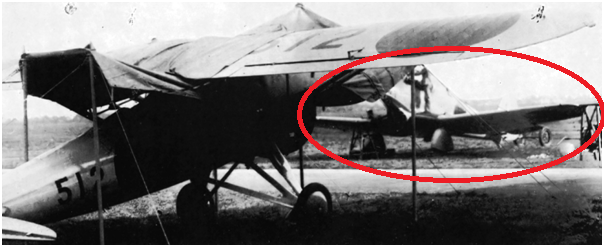- Yes
- No

Kawasaki Ki-5 (川崎 キ5)
The Kawasaki Ki-5 is a Japanese prototype fighter created in 1934, which was to be a replacement for the Kawasaki Type 92 aircraft. Four prototypes of the Ki-5 were built.
History
In 1933, the Japanese Army Commander commissioned Kawasaki to create a successor to the Kawasaki Type 92 fighter. The best Kawasaki inrzyni, i.e. Takeo Doi and Richard Vogt, were assigned to the project. In this project, Takeo Doi was already the chief designer, and Richard Vogt only supervised the student until he had to leave for Germany at the end of 1933. Work on the future Ki-5 was going very well in January or February 1934. At that time, it was a very modern design (the first Japanese fighter in a low-wing configuration). In the spring of 1934, the plane was tested by the army, during which, due to its design (wings of an inverted seagull), the plane had poor lateral stability, in addition, the engine of the aircraft (Kawasaki Ha-9-I) caused strong vibrations and had weaker performance than planned. The plane was able to reach the planned maximum speed of 380 km/h, but reached only 360 km/h, which was not a big difference to the Kawasaki Type 92 fighter (maximum speed 355 km/h). Kawasaki tried to save the project by creating further prototypes (eventually 4) that had increasingly straight wings to correct the aircraft’s shortcomings. However, in September 1934, the Kawasaki Ki-5 aircraft was decommissioned. The prototype Ki-5 probably went to scrap, but in 1936 a prototype Ki-28 was created based on the Ki-5.
Photo Kawasaki Ki-5


Construction description
The Kawsaki Ki-5 is a low-wing fighter made of the wings of an inverted seagull with a fixed landing gear. The plane was a metal structure, partially covered with canvas, with an open cockpit. The aircraft was powered by a liquid-cooled twelve-cylinder Kawasaki Ha 9-I inline engine with a take-off power of 850 hp (625kW), which rotated a two-bladed wooden propeller with a diameter of 3000 mm. The plane had two Type 89 7,7mm machine guns in its nose.
General characteristics
- Crew: 1
- Length: 7,78 m
- Wingspan: 10,60 m
- Height: 2,60 m
- Wing area: 18 m2
- Empty weight: 1500 kg
- Gross weight: 1870 kg
- Maximum Take-off Weight: ?
- Powerplant: 1 x Kawasaki Ha 9-I, an liquid-cooled twelve-cylinder engine with a take-off power of 850 hp (625kW)
- Propellers: Two-bladed wooden propeller with a diameter of 3000 mm
Performance
- Maximum speed: 360 km/h
- Cruising speed: ?
- Range: 1 000 km
- Maximum Range: ?
- Service ceiling: 9400 m
- Climb Rate: ?
- Rate of climb: 8,0 min to 5000 m
Armament
- 2 x Type 89 7.7mm Machine Guns in the nose (600 rounds per rifle (?))
Special thanks
Summary
The Kawasaki Ki-5 is an interesting fighter for Japan in War Thunder. This aircraft would be an interesting fighter of the lowest era, which would fit well as a premium fighter. This aircraft was an important step in the creation of the modern Japanese Air Force (Tu Takeo Doi improved his skills, which in the past allowed him to design the Ki-10, Ki-28, Ki-60, Ki-61, Ki-100). I encourage you to discuss in the comments and to share your own knowledge on this subject.
Finally, I apologize for the linguistic and logical errors because unfortunately English is not my main language and I had to use google translator.
Internet sources
キ5 (航空機) - Wikipedia
Kawasaki Ki-5 - Wikipedia
experimenteller Jäger Ki-5
Kawasaki Ki 5 : Kawasaki
Book sources
- Mikesh, Robert C.; Abe, Shorzoe (1990).Japanese Aircraft, 1910-1941 page 155-156
- The Xplanes of Imperial Japanese Army and Navy 1924-45 page 22
The Xplanes of Imperial Japanese Army and Navy 1924-45 | PDF - Monografie Nr.11 - Nakajima Ki-27 Nate (Monographs No.11 - Nakajima Ki-27 Nate) page 8-9
Monografie Nr.11 - Nakajima Ki-27 Nate | PDF

Thank you for reading the suggestion, see you in the next one. Good luck pilots




